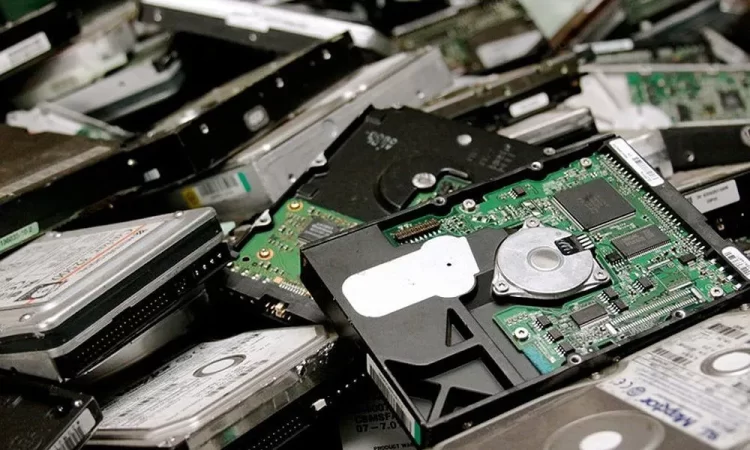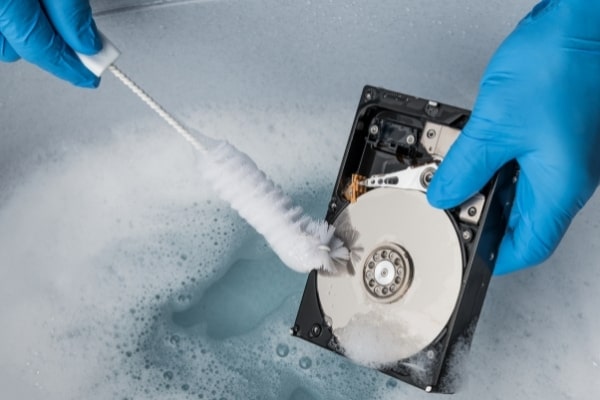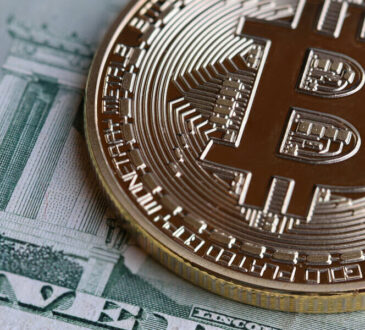
The modern ritual of hard disk disposal creates a curious intersection between our digital and physical worlds, marking the moment when our most intimate data becomes vulnerable to resurrection by unknown hands. These rectangular vessels, once trusted guardians of our digital lives, transform into potential betrayers the moment they leave our possession—their magnetic memories stubbornly persistent despite our attempts at erasure.
The Afterlife of Your Data
Our relationship with digital information follows a strange paradox: we simultaneously treat it as both ephemeral and permanent. We trust that photos uploaded to clouds will outlive us, yet believe files deleted from hard drives vanish instantly into digital oblivion. The truth resides in a more complicated territory.
“Singapore’s cybersecurity experts note that approximately 67% of second-hand hard drives purchased from various markets still contained recoverable personal data from previous owners, despite attempts at conventional deletion.”
When we discard storage devices, we participate in an unknowing act of potential self-disclosure. The conventional deletion process merely removes the directional markers pointing to where information resides without disturbing the content itself—akin to removing a book’s entry from a library catalogue whilst leaving the volume itself untouched on the shelf.
Digital Archaeology: Excavating Discarded Drives
The Unintended Archives
Researchers examining improperly sanitised hard drives have uncovered extraordinary digital artefacts:
· Complete medical histories with diagnostic images and treatment records
· Tax documents containing comprehensive financial profiles
· Personal photographs chronicling intimate family moments
· Email archives revealing professional and personal correspondences
· Password collections offering keys to still-active digital accounts
These digital excavations require no specialised equipment—merely ordinary recovery software available to anyone with modest technical knowledge. The barrier between your former private information and public discovery is remarkably thin.

The Material Consequences
Beyond Data: Environmental Legacies
Hard drives embody the contradictions of our technological age: sophisticated information technology constructed from some of the earth’s most precious and problematic materials. Each discarded drive contains a complex material profile:
· Rare earth elements mined at significant environmental cost
· Precious metals including gold, silver, and platinum in circuit components
· Neodymium magnets containing elements with limited global supplies
· Aluminium and steel casings that could be infinitely recycled
“Singapore’s National Environment Agency reports that improper disposal of electronic waste, including hard drives, contributes to approximately 60,000 tonnes of e-waste annually, with recoverable materials valued at over S$370 million.”
When we dispose of these devices improperly, we transform potential resources into environmental burdens. The toxic compounds contained within hard drives—including lead, mercury, and flame retardants—can leach into soil and water systems, writing chemical signatures into landscapes far removed from their digital origins.
The Security Imperative
Protecting Your Digital Shadow
Proper disposal requires understanding that truly removing data demands more thorough intervention than the delete key provides. Professional data sanitisation employs multiple approaches:
· Secure overwriting software that replaces existing data with random patterns multiple times
· Degaussing, which uses powerful magnetic fields to disrupt the magnetic alignment that stores information
· Physical destruction through industrial shredders that reduce drives to fragments too small to recover
· Cryptographic erasure for newer solid-state drives, which removes the encryption keys needed to interpret data
Each method offers varying levels of security, with combinations providing the most comprehensive protection against data recovery.
The Circular Potential
From Waste to Resource
The tragedy of current disposal practices lies in their inefficiency—transforming valuable resources into waste rather than capturing their potential for renewal. Proper recycling allows:
· Recovery of precious metals for new manufacturing
· Reuse of rare earth elements facing global supply constraints
· Reduction in environmentally destructive mining operations
· Minimisation of toxic materials entering waste streams
“Singapore’s Resource Sustainability Act emphasises the importance of proper e-waste recycling channels, with hard disk disposal representing a significant opportunity for material recovery and environmental protection.”
Specialised recycling facilities can process hard drives in ways that both secure data through destruction and recover valuable materials, creating a harmony between security needs and environmental responsibility.
The Regulatory Landscape
Navigating Legal Obligations
The growing recognition of both data security and environmental concerns has generated an evolving regulatory framework. For organisations, regulations like Singapore’s Personal Data Protection Act create explicit obligations for proper data disposal, with significant penalties for non-compliance.
For individuals, while specific legal requirements may be less stringent, the personal risk of identity theft creates compelling motivation for thorough sanitisation. The true cost of improper disposal often becomes apparent only after exposure occurs—when financial accounts are compromised, identities stolen, or private moments made unexpectedly public.
Best Practices for Responsible Disposal
Securing Digital and Material Futures
Creating a thoughtful approach to hard drive disposal requires attention to both data security and environmental responsibility:
· Always assume data remains recoverable unless professionally sanitised
· Utilise certified data destruction services that provide verification
· Research local e-waste recycling programmes that specialise in electronic components
· Consider the full lifecycle of digital devices from purchase through disposal
· Support manufacturers who design for eventual disassembly and recycling
The most secure approach often combines methods—using specialised software to overwrite data before physical destruction or recycling through certified channels.
Conclusion: Mindful Transitions
We live in an age where our digital and physical existences have become inextricably intertwined. The devices we discard don’t simply disappear—they transition into new states of being, carrying traces of our lives into uncertain futures. What feels like an ending when we dispose of old technology is merely a transition point in a longer material and informational journey.
Perhaps what’s needed is a more ceremonial approach to these transitions—rituals of proper closure that honour both the value of our private information and the material resources embodied in our devices. By bringing consciousness to these moments of transition, we might better protect ourselves while simultaneously caring for the wider world that eventually receives all our discarded technologies. This attention to the full circle of creation and dissolution represents the most thoughtful approach to hard disk disposal.




